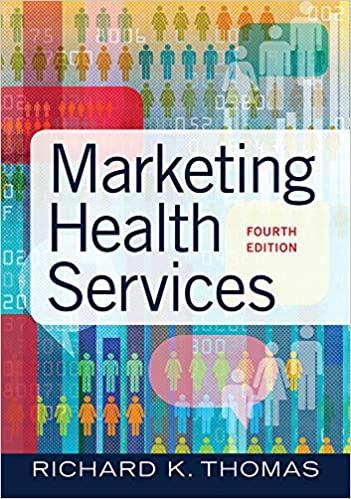The primary objective in analyzing any market is to determine the potential demand for a good or
Question:
The primary objective in analyzing any market is to determine the potential demand for a good or service being offered to that market. The market analysis typically determines the size and composition of the target market and profiles potential customers in terms of their demographic and socioeconomic characteristics. The market is also typically profiled in terms of health-related characteristics such as disease incidence, utilization rates, and referral patterns.
The initial market analysis attempts to estimate the market potential. The analyst will typically determine, for example, the age distribution, racial characteristics, and marital status of the target population along with socioeconomic characteristics such as income levels, workforce characteristics, and educational levels. Through this process, the analyst compiles all of the information necessary to determine the potential market for the goods or services being offered.
Such characteristics need to be verified from as many perspectives as possible and interpreted on the basis of any information on the community that may have a bearing on the market. An analyst must be able to read between the lines and capture the essence of the market, which may not be obvious from the raw data.
In some cases, especially when entering a new market, the analyst may have only secondary data. The analyst should verify this information through ground-level research using whatever means available—even primary research. In fact, the analyst may not be able to determine the effective level of demand in a market without surveying the residents. A case in point involved a growing suburban area outside a mediumsized southern city. The community had all the earmarks of an up-and-coming suburb. Its population was growing rapidly, and an increasing number of upscale housing units were being constructed. Income levels were rising, and the socioeconomic status of the resident population was steadily increasing. An examination of the available data suggested a highly attractive market in terms of its demographics.
Analysis of the secondary data revealed that the market was composed of an upwardly mobile population with a moderately high level of ambulatory care needs. The population appeared to be ripe for innovative programs (e.g., freestanding birthing centers), progressive services (e.g., behavioral healthcare), and even trendy services (e.g., fitness centers). In short, the community appeared to be a dream for marketers offering new services. Even better, virtually no competition had emerged in the community.
Questions
1. What characteristics of this fast-growing suburban population made hospital administrators envision a potential market?
2. When the suburb’s population was initially examined, what types of services did the analyst think would appeal to the community?
3. What type of research was carried out to verify the conclusions based on secondary data for this population?
4. How did the findings from the consumer survey contradict what was deduced from the secondary data?
5. What did the analyst discover about this population that discouraged the development of innovative health services?
6. Rather than cutting-edge services, what types of programs did the analyst conclude were more appropriate for this population?
Step by Step Answer:






